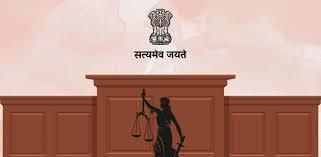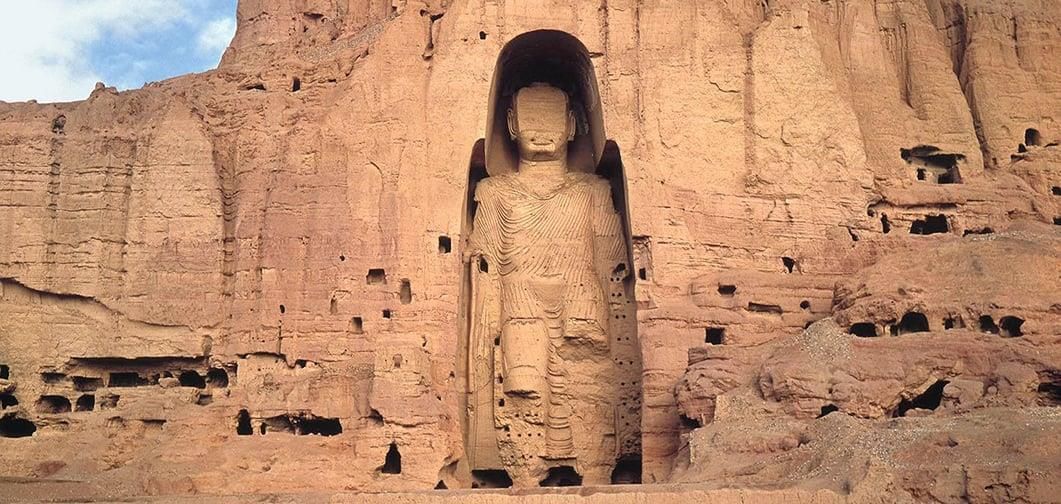UPSC Daily Current Affairs: 24th April 2025 | Current Affairs & Hindu Analysis: Daily, Weekly & Monthly PDF Download
GS2/Polity
Is India Heading Towards Judicial Despotism?
 Why in News?
Why in News?
A series of recent judgments by the Supreme Court of India has sparked a national debate regarding the judiciary's powers and motives, prompting discussions about whether the country is entering an era of "judicial despotism" or if the judiciary is simply fulfilling its role in a complex socio-political landscape.
- The Supreme Court's recent decisions have raised concerns about the balance of power among the judiciary, legislature, and executive.
- Judicial review, although not explicitly mentioned in the Constitution, is vital for upholding fundamental rights.
- Article 142, allowing for "complete justice," has been both praised and criticized for its potential for judicial overreach.
- Landmark judgments have led to mixed public reactions and highlight the tension between judicial and parliamentary supremacy.
Additional Details
- Judicial Review: The concept, rooted in Article 13, empowers courts to invalidate laws that violate fundamental rights. Articles 32 and 226 reinforce this role, establishing judicial review as a crucial element of constitutional structure.
- Article 142: This article grants the Supreme Court the power to ensure "complete justice," utilized in significant cases such as the Babri Masjid verdict and mob lynching guidelines. Critics argue it allows excessive judicial discretion.
- Recent Landmark Judgments: The Supreme Court's mixed responses include upholding demonetization, rejecting same-sex marriage recognition, and validating the NRC in Assam.
In conclusion, while the Indian judiciary plays a crucial role in safeguarding democracy and individual rights, it must navigate the fine line between necessary intervention and potential overreach. The ongoing discourse surrounding judicial despotism must differentiate between genuine judicial duty and any perceived excesses in authority.
GS3/Environment
Air Pollution in India — Where Does It Come From?
Why in News?
Millions of people die early because of dirty air. This raises critical questions about the sources of air pollution in India, particularly regarding sulfur dioxide (SO2), nitrogen oxides (NOx), methane (CH4), and ammonia (NH3).
- The largest source of SO2 emissions in India is energy production, primarily from coal-fired power plants.
- Transportation is the main contributor to NOx emissions, especially from diesel vehicles.
- Agriculture is the predominant source of methane emissions, primarily from livestock and rice paddies.
- Ammonia emissions are significantly driven by the use of nitrogen-based fertilizers and livestock waste.
Additional Details
- Sulfur Dioxide (SO2): The largest source is energy production, especially from coal-fired power plants. For example, coal contains sulfur impurities that are released when burned, significantly contributing to SO2 pollution.
- Nitrogen Oxides (NOx): The transportation sector is the largest emitter, particularly from diesel-powered vehicles. Additionally, the burning of coal and gas for electricity generation and industrial processes also contribute significantly to NOx emissions.
- Methane (CH4): Agriculture is a major source, especially through enteric fermentation in livestock and flooded rice fields. Methane is also emitted from organic waste in landfills and during fossil fuel extraction.
- Ammonia (NH3): Major sources include nitrogen-based fertilizers and livestock waste. The application of fertilizers like urea leads to ammonia volatilization, while animal manure contributes to ammonia emissions.
The Indian government has initiated several measures to combat air pollution, including the National Clean Air Programme (NCAP), which aims to reduce particulate matter pollution, and the Pradhan Mantri Ujjwala Yojana to promote cleaner cooking technologies. To address these issues effectively, a shift to clean energy and stronger enforcement of environmental regulations are essential.
GS3/Environment
Musk Deer: Species in the News
 Why in News?
Why in News?
A recent report from the Central Zoo Authority (CZA) has highlighted a concerning gap in conservation efforts for the musk deer, specifically the absence of any active breeding programs.
- The Himalayan Musk Deer (Moschus leucogaster) is classified as an endangered species.
- This species is native to the Himalayas, found in countries such as India, Nepal, Bhutan, Pakistan, and China.
- Its natural habitat consists of altitudes ranging from 2,200 to 4,300 meters in alpine forests and scrublands.
Additional Details
- Behavior: Musk deer are primarily solitary, nocturnal, and territorial. Males possess long, curved canine teeth and a musk gland that is highly sought after by poachers.
- The species plays a crucial role in seed dispersal, which is vital for maintaining the balance of the alpine ecosystem.
- Threats: Major threats to musk deer include poaching for their musk glands, habitat loss due to deforestation, and genetic issues arising from fragmented populations.
- Conservation Status: The Himalayan musk deer is listed as endangered on the IUCN Red List and is protected under Schedule I of the Wildlife (Protection) Act, 1972 in India.
- Protected Areas:
- Kedarnath Wildlife Sanctuary: Established in the western Himalayas, covering 975 km², it is crucial for the conservation of musk deer.
- Askot Musk Deer Sanctuary: Located in Uttarakhand, this sanctuary is specifically dedicated to the conservation of musk deer.
- Himalayan Musk Project (1982): This initiative aimed to establish a captive breeding program within Kedarnath Sanctuary but faced challenges such as diseases and poor survival rates, leading to its closure in 2006.
In summary, the musk deer faces significant threats from poaching and habitat loss, necessitating urgent conservation measures to ensure its survival in the wild.
Question: Which of the following are the most likely places to find the musk deer in its natural habitat?
- 1. Askot Wildlife Sanctuary
- 2. Gangotri National Park
- 3. Kishanpur Wildlife Sanctuary
- 4. Manas National Park
Select the correct answer using the code given below:
Options: (a) 1 and 2 only (b) 2 and 3 only (c) 3 and 4 only (d) 1 and 4 only
GS1/History & Culture
Revival of the Bamiyan Buddha by the Taliban
 Why in News?
Why in News?
After two decades since the destruction of the Bamiyan Buddha statues, the Afghan Taliban have expressed their intention to restore these significant cultural artifacts.
- The Bamiyan Buddhas were once among the largest standing Buddha statues in the world.
- They were located in the Bamiyan Valley, Afghanistan, approximately 130 km northwest of Kabul.
Additional Details
- Bamiyan Buddhas: The Western Buddha (Salsal) stood at 55 meters, while the Eastern Buddha (Shah Mama) was 38 meters tall.
- Construction: Built around 600 CE during the Hephthalite rule, they were carved into sandstone cliffs and featured vibrant colors, including carmine red for the larger statue.
- Artistic Influence: The style of the Buddhas showcased a blend of Greco-Buddhist art, Sasanian influences, and elements from the Byzantine Empire.
- Historical Significance: The statues represented figures like Vairocana and Sakyamuni (Gautama Buddha) and served as a major Buddhist religious center along the Silk Road, contributing to the spread of religion, philosophy, and art.
- Despite surviving invasions by notable figures such as Genghis Khan in 1221 and Aurangzeb in the 17th century, the statues were destroyed in 2001 under orders from Mullah Muhammad Omar.
- The site is recognized as a UNESCO World Heritage Site due to its immense cultural and historical significance.
The revival of the Bamiyan Buddhas indicates a potential shift in the Taliban's approach to cultural heritage and may have implications for Afghanistan's historical narrative and international relations.
GS3/Science and Technology
Role of Lipids in Protein Function and Co-Evolution
Why in News?
Recent research conducted by the CSIR-Centre for Cellular and Molecular Biology in Hyderabad has revealed that lipids, particularly those found in mitochondrial membranes, play a crucial role not only in the structural integrity of cells but also in the functioning and evolutionary processes of proteins.
- Lipids constitute up to 30% of the dry weight of cells and are essential for membrane integrity and various biological processes.
- These biomolecules influence protein function and evolution through their interactions with proteins in different organisms.
Additional Details
- Lipids: Comprising fats, phospholipids, and sterols, lipids are vital for maintaining cellular membranes. They form a bilayer structure, with hydrophilic heads facing outward and hydrophobic tails facing inward, which provides stability and facilitates protein functionality.
- Role of Lipids in Cells: Lipids not only contribute to membrane structure but also enhance the flexibility and stability of membrane proteins involved in critical functions such as receptor binding and ion channeling.
- RC1 (Respiratory Complex 1): This protein complex is essential for cellular respiration and energy production, composed of 44 proteins synthesized both in the cytoplasm and mitochondria. Mutations in RC1 can result in diseases due to its critical role in respiration.
- Lipid-Protein Co-evolution: The interaction between proteins and specific lipids, especially those from their own kingdom (plant or animal), highlights the co-evolutionary dynamics that contribute to cellular evolution and have implications for human health and disease treatment.
This research underscores the complexity of lipid-protein interactions and their evolutionary significance, offering insights that may be pivotal in understanding cellular processes and developing treatments for various diseases.
GS2/International Relations
Responding to the Terror Attack in Pahalgam
Why in News?
The terrorist attack in Pahalgam, Jammu and Kashmir, represents a deliberate political signal aimed at undermining stability, tarnishing the image of a flourishing Kashmir, and challenging India's diplomatic stance. Occurring amidst an uptick in tourism and coinciding with U.S. Vice-President J.D. Vance's visit, this attack emphasizes the need to explore its motives, critique India's security apparatus, and develop a long-term strategy for deterrence and stability.
- The attack targeted Baisaran, a symbol of peace and tourism in Kashmir.
- It underscores Pakistan's ongoing proxy warfare strategy through groups like The Resistance Front.
- Serious lapses in intelligence and surveillance contributed to the attack.
- A long-term deterrence strategy is essential for India to address these challenges.
Additional Details
- Motives Behind the Attack: The attack aimed to instill fear by targeting a peaceful tourist destination, thereby disrupting the narrative of normalcy in Kashmir.
- Pakistan's Role: The incident was claimed by a proxy group linked to Pakistan's ISI, indicating a calculated approach to maintain pressure on India while avoiding direct confrontation.
- Intelligence Failures: The lack of adequate surveillance measures in a known tourist area highlights significant gaps in counter-terrorism preparedness.
- Long-Term Strategy: India needs an institutionalized deterrence strategy that includes diplomatic isolation and enhancing covert operations against terrorist networks.
- Recognition of Kashmiris: It's vital to view Kashmiris as victims rather than collaborators, focusing on inclusive development and social integration to foster peace.
The Pahalgam attack is part of a broader, ongoing asymmetrical conflict. India must adopt a strategy that emphasizes credible deterrence and systematic reforms rather than reactive measures. The global community's support is crucial, particularly in addressing state-sponsored terrorism. Moving forward, India must communicate a resolute stance against such aggressions, reinforcing that consequences will follow.
GS2/Polity
Trans Sceptic Arguments are Incoherent
 Why in News?
Why in News?
The rights of transgender individuals have increasingly become contentious issues in cultural and legal debates worldwide. The recent ruling by the United Kingdom Supreme Court, which excludes trans women from the definition of women under the Equality Act, 2010, represents a significant moment in this ongoing struggle. While some portray this decision as a protective measure for cisgender women, it reveals a deeper ideological conflict regarding inclusion, justice, and human rights in democratic societies.
- The rise of trans-exclusionary feminism mirrors far-right ideologies that frame trans women as threats.
- The U.K. Supreme Court's decision undermines the Gender Recognition Act, 2004, raising questions about equality under the law.
- Arguments for separate facilities for cis and trans women echo discredited doctrines of racial segregation.
Additional Details
- Trans-Exclusionary Rhetoric: Some progressive or feminist groups adopt exclusionary language, using safety concerns to justify their stance against trans women. This rhetoric often reflects traditional far-right fears.
- Legal Implications: The Supreme Court's ruling narrows protections for trans women, asking critical questions about the commitment to equality in a democratic society.
- False Equivalence: The argument for "equal but separate" facilities for cis and trans women is reminiscent of the discredited separate but equal doctrine, which dehumanizes trans individuals and risks endangering all women.
- Scientific Understanding: Modern biology supports a nuanced view of sex and gender, challenging binary models and recognizing the diversity of sexual and gender identities.
The current backlash against trans rights is not merely about safety or science; it reflects deeper societal anxieties about identity and reality. The framing of exclusionary policies as common sense is a political strategy shaped by fear and misinformation. Just as previous scientific misconceptions have been overcome, there is hope for a more inclusive understanding of gender and identity in the future.
GS3/Environment
Akshvi Platform for Disaster Damage Reporting
Why in News?
India has launched Akshvi, an innovative e-digital wallet designed to aid in disaster relief and enhance the accuracy of loss reporting for communities affected by disasters.
- Akshvi enables self-reporting of economic and non-economic losses during climate-related events.
- It addresses the data gap in disaster reporting, which is crucial for effective relief distribution.
Additional Details
- Self-Reporting Mechanism: This feature allows communities impacted by disasters—such as floods, droughts, heatwaves, and landslides—to accurately log their losses, facilitating timely assessments.
- Localized Data Collection: Akshvi gathers hyperlocal data, essential for customizing disaster management strategies and relief efforts based on the specific needs of affected areas.
- User-Friendly Interface:The platform includes several tools for ease of use:
- IVRS: Enables voice recordings of losses.
- WhatsApp Chatbot: Allows tech-savvy users to report losses easily.
- Assisted Data Entry: Provides help for those who require support in entering information.
- Traceability: Akshvi ensures that the distribution of aid is transparent, tracking the progress of relief to guarantee it reaches the affected households.
- Integration with Government Schemes: The data collected by Akshvi is linked to social welfare schemes and index-based insurance programs, thereby enhancing disaster response efforts.
Through its innovative features, Akshvi aims to empower communities in managing disaster-related losses while improving the overall efficiency of disaster response mechanisms.
GS2/Governance
Food Safety and Nutrition in India - A Public Health Challenge
Why in News?
In India, food safety and nutrition issues are often secondary to socio-political concerns, despite disturbing public health statistics that indicate widespread child malnutrition and a rise in non-communicable diseases. The issue of rampant food adulteration—from dairy products to spices—poses significant risks to public health and undermines the country’s economic credibility and regulatory frameworks.
- Food safety and nutrition are critically affected by socio-political influences.
- High levels of food adulteration endanger health and economic integrity.
- Public health indicators highlight severe malnutrition among children.
Additional Details
- Nutritional Status:According to the NFHS-5 (2019-21), among children under five:
- Stunting: 35.5%
- Wasting: 19.3%
- Underweight: 32.1%
- Food Adulteration:
- Milk Adulteration: A national survey in 2011 found that 70% of milk samples did not meet safety standards, commonly adulterated with water, salt, detergents, or glucose.
- Spices: Concerns raised by the EU regarding ethylene oxide in Indian chili peppers and the ban of MDH and Everest spice blends due to carcinogenic content.
- Health Implications: Adulterated food is linked to a rise in non-communicable diseases, including diabetes, which affects 77 million adults in India.
- Regulatory Challenges: The FSSAI’s role includes conducting raids and testing, but implementation challenges arise from weak state infrastructure and a lack of public awareness.
Food safety encompasses more than health; it is a governance issue with socio-economic and international implications. Ensuring access to clean, nutritious, and unadulterated food should be a state priority, supported by robust institutions, regulatory measures, and public engagement, especially given the dual challenges of undernutrition and rising non-communicable diseases.
GS2/International Relations
India’s 5-Point Action Against Pakistan After Pahalgam Terror Attack
Why in News?
The Cabinet Committee on Security (CCS), India's principal national security authority, has implemented stringent measures against Pakistan following the discovery of cross-border links in a terror attack in Pahalgam, Jammu and Kashmir, which resulted in the deaths of 26 individuals. In response, India has unveiled a comprehensive 5-point action plan aimed at disrupting Pakistan's infrastructure, diplomatic presence, and cross-border movements.
- India has suspended the Indus Waters Treaty until Pakistan ceases support for cross-border terrorism.
- The Attari-Wagah border check post has been closed, halting all cross-border traffic.
- All SAARC Visa Exemption Scheme (SVES) visas for Pakistani nationals are cancelled.
- Pakistan military advisors in India are declared Persona Non Grata and expelled.
- India will reduce its diplomatic staff in Pakistan significantly.
Additional Details
- Indus Waters Treaty: This treaty, established in 1960, governs water-sharing arrangements between India and Pakistan. India's suspension marks a significant diplomatic shift.
- Closure of Attari-Wagah Border: The closure affects all movement of people and goods, with provisions for those already in India to return by May 1, 2025.
- Cancellation of SVES: This measure impacts Pakistani nationals in India, mandating their departure within 48 hours.
- Expulsion of Military Advisors: All military, naval, and air advisors from Pakistan's High Commission in New Delhi are expelled, while Indian military advisors in Islamabad will also be withdrawn.
- Reduction of Diplomatic Personnel: India's diplomatic staff in Pakistan will decrease from 55 to 30 by May 1, 2025, indicating a substantial reduction in bilateral engagement.
In light of the recent geopolitical landscape, Pakistan's strategic significance has waned, especially after the U.S. withdrawal from Afghanistan in 2021. This has led to a decrease in U.S. economic support and Gulf nations' reluctance to provide financial aid due to Pakistan’s repeated bailouts. Additionally, China’s investment interest has declined due to corruption and security issues affecting Chinese personnel in Pakistan.
As Afghanistan, now under Taliban control, poses a security threat rather than providing strategic depth, Pakistan faces increased tensions, particularly with Iran, where cross-border strikes against militant camps have occurred. India’s confidence and assertiveness in the region, particularly following the abrogation of Article 370 in 2019, suggests a shift in focus away from Pakistan, especially concerning Kashmir.
India’s long-term strategy should prioritize the well-being of the people of Kashmir, balancing assertiveness with pragmatic engagement to maintain stability and prosperity in the region following the Pahalgam attack.
GS2/International Relations
India Puts Indus Waters Treaty in Abeyance
Why in News?
India has decided to suspend the Indus Waters Treaty (IWT) of 1960 with immediate effect, following a deadly terror attack in Pahalgam that resulted in the loss of at least 26 lives. This treaty will remain in abeyance until Pakistan credibly and permanently ceases its support for cross-border terrorism. This decision was reached during a Cabinet Committee on Security (CCS) meeting chaired by Prime Minister Narendra Modi.
- The IWT governs water sharing between India and Pakistan, with India managing eastern rivers and Pakistan controlling western rivers.
- This treaty has endured multiple conflicts between the two nations without suspension — a first occurring now due to escalated tensions.
Additional Details
- Indus Waters Treaty (IWT): Signed in 1960, it has remained in effect despite significant geopolitical tensions, including calls for its revocation after the 2016 Uri attack.
- Rising Tensions: India has been seeking modifications to the treaty since early 2023, citing fundamental changes in circumstances, environmental challenges, and ongoing terrorism issues from Pakistan.
- Hydroelectric Projects: Pakistan raised concerns over India's hydroelectric projects, specifically the Kishanganga and Ratle projects, claiming they violate IWT terms.
- Suspension Implications: This marks the first formal suspension of the treaty, as the IWT lacks provisions for unilateral withdrawal, making this a complex legal situation.
- Dispute Resolution Mechanism: The treaty includes a three-tiered process for resolving disputes, but if suspended, the mechanism becomes ineffective.
- Impact on Pakistan: Pakistan heavily relies on the Indus river system, with 80% of its cultivated land dependent on this water, affecting agriculture and urban supply.
The suspension of the IWT is a significant geopolitical move that could have lasting consequences for water security and international relations in the region, especially affecting Pakistan's agricultural economy and urban water supply.
|
38 videos|5293 docs|1118 tests
|
FAQs on UPSC Daily Current Affairs: 24th April 2025 - Current Affairs & Hindu Analysis: Daily, Weekly & Monthly
| 1. What are the main causes of air pollution in India? |  |
| 2. How does judicial despotism manifest in India? |  |
| 3. What actions did India propose in response to the Pahalgam terror attack? |  |
| 4. What role do lipids play in protein function and co-evolution? |  |
| 5. Why is food safety and nutrition a public health challenge in India? |  |
















